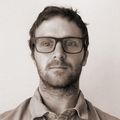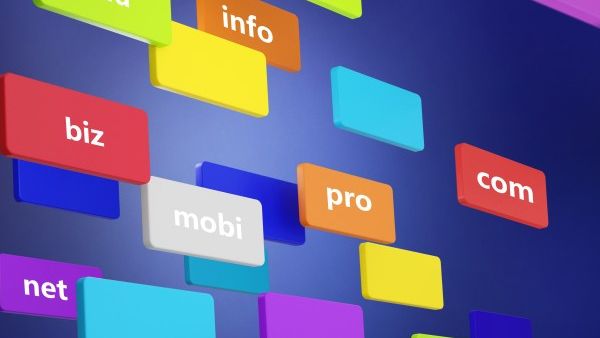What Is Domain Hijacking and Why Should I Be Concerned?
Domain hijacking is, quite simply, the act of having your domain name stolen. A simple enough prospect that can manifest in several different ways but all culminate in the same result. Somewhere, a hacker is uttering those immortal words: “I’m in!”
Cliche much?
Once that happens, the beating heart of your organization's digital identity is theirs to do with as they please. Access to your Domain Name System details allows them to point your URL anywhere they choose, and suddenly every customer that visits your site is taken to the internet equivalent of a back alley where their personal data is there for the taking.
Not only that, attackers are free to populate your domain with any content they please, dealing untold damage to your reputation. And all this before the ransom demand for the safe return of your domain even hits your inbox.

What Can I Do?
Monitoring for and preventing domain hijacking should come down to one end goal: business continuity. Anything you can do to maintain an uninterrupted digital CX strategy will keep the confidence of your customer and project a secure, stable environment for potential customers to flourish.
Below are some top tips to help strengthen your resilience to domain hijacking and narrow the opportunity cybercriminals have to exploit vulnerabilities.
Vet Your Registrar and Lock Down Your WHOIS.
While most businesses will have an established web presence these days, the subscription-based nature of many domain names and hosting services offer the chance to evaluate needs and seek new opportunities regularly.
Ensuring your registrar, with whom you have registered your domain, has adequate lockdown and continuity strategies for malicious attacks, such as domain hijacking, is a crucial consideration.
It’s also worthwhile separating your domain registrar and your hosting provider across separate services so as to create further fire trenches in your information trail.
Once registered, ensuring your WHOIS records are secure and adequately anonymized using domain privacy is key in removing potential avenues for attackers to gather vital information for phishing attacks with which to gain the keys to your kingdom. Most domain registrars provide this service at a limited additional cost.
Phishing: Don’t Take the Bait and Make Sure Others Don’t Either
It’s rare that a business will have an individual to sit and monitor all email traffic for any potentially malicious contact, but the easiest way by which a malcontent might hijack your domain is by acquiring your login details.
Here is where phishing comes in. Hackers will send emails, make a voice call, or send messenger pigeons to your staff, making innocent, often business-critical inquiries that lead to the revelation of your account information.
But while you might be savvy to their schemes, not everyone in your organization can say the same. And that’s before you even factor in those one or two disgruntled employees just looking for a chance to do some sneaky damage.
This is where top-to-bottom communication within your business is vital.
Staying abreast of the latest phishing schemes, which are usually targeted toward multiple businesses, will actively engage your entire team in protecting your digital property.
This is particularly important with remote working’s continuing presence in the market. Between an increase in email traffic and a lack of awareness on how to manage email overload, vulnerabilities to phishing are ever more present.
Indeed, phishing attacks are on the increase. Between 2019 and 2020, a 2% rise in phishing was recorded.
This is, in part, due to Covid-19 and the changing business landscape as previous years had seen a statistical downturn. Thus, further ensuring your employees follow good home cybersecurity practices can only benefit you.

Start Spoof Spotting
Domain spoofing is often a parallel or resultant activity to the phishing scheme. This occurs when an individual or malicious group uses a domain that appears to be legitimate and can often be tailored to a specific organization in a targeted attack.
Take the cause of new au domain licensing rules. Businesses with a vested interest in Australian markets should be wary of anyone jumping on their potential new market domain name and either holding it ransom or using it maliciously by redirecting your web visibility to a new .au rather than, for example, .com.au existing domain.
This is where it’s vital to stay on the cutting edge of new landscape developments in online business and to hold a critical eye over any out-of-the-ordinary traffic that purports to originate from within your organization or a trusted vendor.
Spoofing has some serious implications for your online reputation management. Once customers get wind of malicious activity carried out under your name, it’s hard for them to ever separate the perpetrators from your legitimate business operations.

Prioritize Powerful Passwords and Shake Hands with Multi-factor Authentication.
Regardless of which tools you use, password integrity is one of the most fundamental ways everyone in your organization can keep confidential information out of the hands of ill-intentioned outsiders.
It’s scary to think that you’re only one bad password away from tanking your whole brand. For many organizations, however, that’s been a sad reality.
Everything from digital marketing tools and strategies that require account creation will detail their password strength criteria on sign up. Having stringent policies on this within your cybersecurity policy for internal use that level up that strength will keep everyone on the same page within your organization.
Multi-factor authentication will give you a further edge as an account administrator. Stolen account credentials account for 20% of all data loss due to cyber-attacks; keeping your authentication criteria on two separate pathways literally multiplies the hurdles an intruder will have to jump over.

Compartmentalize, Compartmentalize, Compartmentalize.
Transparency and communication are key to any organizational dynamic, but certain things should be shared on a “need to know” basis. This includes your domain details.
Communication hierarchies and compartmentalized responsibilities laid out in detail in your cybersecurity policy will provide a rigid structure to better understand information security, and a reporting structure helps to narrow down the source of any breaches to quickly deal with any compromised information.
Assigning important registry details to specific members of your IT team or dedicated support staff means that the risk from social engineering is also diminished.
Just because a lot of online, e-commerce, and SaaS process-based tasks are handled by secure workflow automation doesn’t mean that the human element is entirely redundant; and therein lies an element of risk.
This is something that’s a lot harder, but not impossible, to mitigate as we are cast to the wind in the remote working wilds of 2022 and beyond. Even while sitting in yesterday’s sweatpants and loading Netflix on your second screen, having a clear communications structure unifies your distant workforce.
Done and Done. What Next?
Companies can do everything they can to ensure the safety of their customer data and the integrity of their online presence, but it’s a grim reality that we live in a world where cybercriminals can penetrate 93% of all current company networks.
Does this negate everything above? Absolutely not.
While such attacks are not inevitable, they are, by and large, more preventable than many businesses realize. If you’ve followed all the advice above and still find yourself a victim, or potential victim, of domain hijacking, then all is not lost.
While vetting your registrar’s hijacking management policy is one of the most important steps in choosing a registrar, getting a handle on an incident with a solid customer interaction management strategy will limit fallout from domain hijacking while your registrar handles things from their side.
This can include social media alerts and updates reassuring your customer base at the earliest opportunity. Get ahead of the incident and be proactive in your communications with your customer.
Get your message out in your words and counteract any digital contaminants already out there.
It’s true there are a lot of bad apples out there. They aren’t going away, and, in fact, they’re getting smarter. Information and cyber security are constant battles, and, at every level within a business, there are opportunities to make life difficult for the digital demons behind the scenes.
Protecting your domain isn’t just securing an important business asset. It’s putting a sign on your door letting everyone who is interested know that you know what you’re doing from the word go.? And if they want what you’ve got, they’re going to have to try a lot harder than that.

Discussions and Comments
Click here to view and join in on any discussions and comments on this article.



